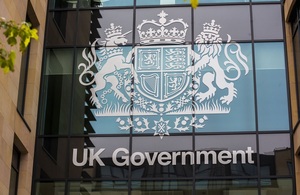UK Government publishes list of UK public bodies that serve Scotland
Over 200 public bodies currently serve people and businesses in Scotland.

The UK Government has published details of more than 200 bodies that currently serve people and businesses in Scotland and which may need to be replicated in a new independent Scottish state.
The Scotland Office Minister David Mundell said the list was a detailed reminder of the many changes in every walk of life that Scotland would have to deal with under independence.
The publication of the list follows a request from the Scottish Government to share information with them regarding the UK Government’s first Scotland Analysis paper, which said that an independent Scotland may need to create up to four times as many public organisations as it has at present to perform the same functions provided by the UK today. There are currently around 50 Scottish Government organisations.
The public bodies included on the list vary enormously in size and in the roles they play. There are central government departments like the Foreign and Commonwealth Office, the security services and the Ministry of Defence.
The list also includes internationally respected bodies like the BBC and the Met Office, as well as bodies such as the DVLA and the Coastguard who provide important services to people across the UK.
There are also a number of smaller organisations who provide important specialised services such as the Advisory Council on the Misuse of Drugs and the British Hallmarking Council.
David Mundell said: “This list clearly illustrates the range of ways in which the UK delivers for Scotland and all other parts of the UK. I am sure it will be an eye-opener for some just how large and complex a task it would be to replicate many of the services and bodies that we have working for us as part of the UK today.’
‘This list is a detailed reminder of the many changes in every walk of life that Scotland would have to deal with under independence. This is one of the many changes independence would bring and it is clearly a challenge for the Scottish Government to outline what it would recreate and at what cost to the taxpayer.”
Although the list runs to more than 200 UK bodies the UK Government considers this to be a conservative estimate in that there are important organisations, like the Bank of England, which do not feature on the list due to the technical definition of what constitutes a ‘public body’.
The UK Government is making this analysis public to help inform the debate ahead of the referendum. This should assist the Scottish Government in explaining whether and how it would replicate these bodies or expand existing ones to perform many of the critical functions they carry out, and what the likely costs would be.
Notes to editors
-
The release of this list follows the publication of the first Scotland analysis paper Devolution and the implications of independence on 11 February 2013.
-
It draws on the list of ministerial responsibilities and the list of public bodies published by the Cabinet Office.
-
This is a conservative estimate of the UK bodies that perform functions for Scotland and may need to be replicated under independence. The analysis excludes those bodies that would not have any direct relevance to an independent Scottish state (like the Arts Council England). It also excludes public corporations like the Bank of England and the Royal Mail, for example, which are not counted as public bodies in the Cabinet Office data.
-
There are some UK bodies on the list that carry out similar roles to those that operate in Scotland under devolution (for example, UK Trade and Investment and Scottish Development International have similar but separate functions). These bodies may not need to be re-created under independence, but they may need to be expanded or changed in order to assume the full range of responsibilities that are currently reserved in the UK and to operate effectively in an independent Scottish state.
-
The UK Government will continue to inform the debate on Scottish independence over the next 18 months through its Scotland analysis programme.